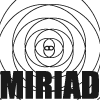Skin
Tamara Trodd tamara.trodd@ed.ac.uk
History of Art, Edinburgh University
Cordelia Warr cordelia.warr@manchester.ac.uk
History and Visual Cultures, University of Manchester
As the outer covering of the body, skin is an opening onto the world at the same time as it is a container for our sense of our own interiority. Skin can be marked, broken, and pierced, all of which can be the occasion for, or result of, medical intervention, group-affiliation or religious conversion. Visually, we respond to skin with a sensory knowledge of what it feels like to touch and to be touched. At the same time, skin is the boundary of our social selves, marking out the border-zone where we take on inscriptions of social identity.
Psychoanalysts, doctors, photographers, film-makers, performance artists, sculptors, and painters have used and understood skin as a privileged location for articulation of the self and its histories. Skin can be both represented (in painting and sculpture, for example) and can raise questions relating to representation (skin as the support for paint and other media, skin as metamorphosed subject). 'Skin' may thus provide a useful model for theorising the interface between different media in the 'age of the post-medium condition'; as painting, sculpture and drawing are all re-made by their points of contact with each other.
A territory of visceral response and exchange, Skin is not bound by time or geography: instead, focusing on the visual, this session seeks to explore skin at the intersections of visual representation, medicine, performance, religion, sensory response and different media.










